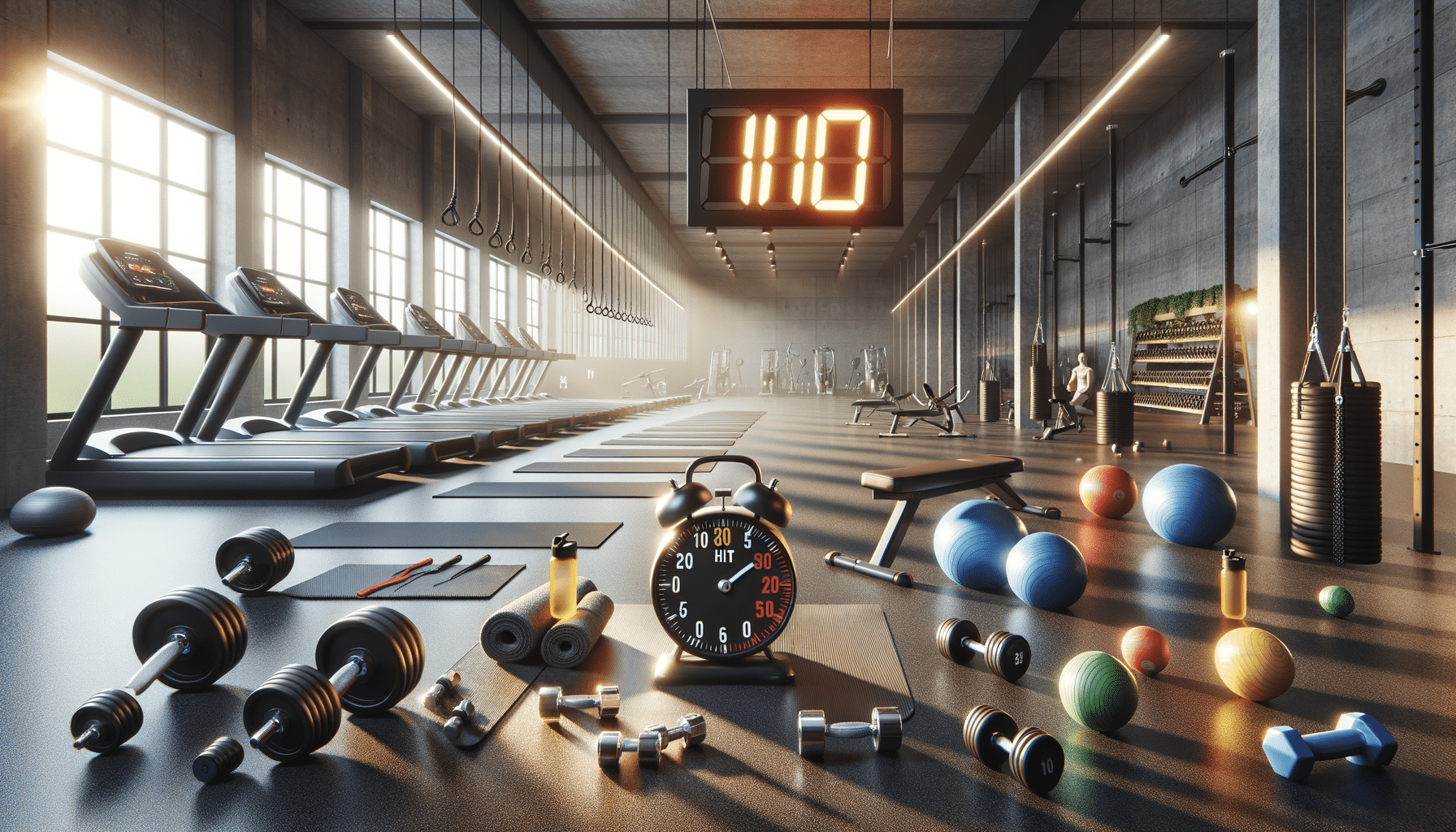10-Minute HIIT Workouts to Burn Fast
Discover the power of high-intensity interval training in just 10 minutes. Learn expert-approved moves that help you burn fat quickly and safely.

Understanding HIIT: The Science Behind the Sweat
High-Intensity Interval Training, commonly known as HIIT, has become a buzzword in the fitness world for its efficiency and effectiveness. The concept is simple: short bursts of intense exercise followed by brief recovery periods. But what makes HIIT so effective? The key lies in its ability to increase the heart rate rapidly, which boosts metabolism and improves cardiovascular health. Studies have shown that HIIT can burn 25-30% more calories than other forms of exercise, such as weight training, cycling, and running, in the same amount of time.
HIIT is not just about burning calories; it also improves oxygen consumption, which is the body’s ability to use oxygen effectively. This is particularly beneficial for athletes and those looking to improve their endurance. Moreover, HIIT can help reduce blood sugar levels and improve insulin sensitivity, making it a great option for those at risk of type 2 diabetes.
One of the most appealing aspects of HIIT is its adaptability. It can be tailored to any fitness level, from beginners to seasoned athletes. Whether you’re sprinting, cycling, or doing bodyweight exercises, the intensity can be adjusted to match your capabilities. This flexibility makes HIIT a versatile and accessible workout option for anyone looking to improve their fitness.
Designing Your 10-Minute HIIT Workout
Creating an effective 10-minute HIIT workout requires a balance of intensity and variety. The goal is to engage multiple muscle groups while keeping the heart rate elevated. Here’s a sample workout to get you started:
- Warm-up: 1 minute of jumping jacks to get the blood flowing.
- Exercise 1: 30 seconds of burpees, followed by 30 seconds of rest.
- Exercise 2: 30 seconds of high knees, followed by 30 seconds of rest.
- Exercise 3: 30 seconds of mountain climbers, followed by 30 seconds of rest.
- Exercise 4: 30 seconds of squat jumps, followed by 30 seconds of rest.
- Cool down: 1 minute of walking in place to lower the heart rate.
This workout is designed to maximize calorie burn and improve cardiovascular fitness in a short amount of time. The exercises target different muscle groups, ensuring a full-body workout. Remember to adjust the intensity based on your fitness level, and always prioritize proper form to prevent injury.
The Benefits of Short HIIT Sessions
While traditional workouts often require a significant time commitment, short HIIT sessions offer a time-efficient alternative without compromising on results. One of the primary benefits of short HIIT sessions is their ability to fit into a busy schedule. With just 10 minutes, you can achieve a high-intensity workout that delivers significant health benefits.
Short HIIT sessions are also effective for improving mental health. The intense bursts of exercise release endorphins, which are chemicals in the brain that act as natural mood lifters. This can help reduce stress and anxiety, leaving you feeling more energized and focused throughout the day.
Moreover, short HIIT workouts can enhance metabolic rate for hours after the session is over, thanks to a phenomenon known as excess post-exercise oxygen consumption (EPOC). This means your body continues to burn calories even after you’ve finished exercising, making it an efficient way to support weight loss goals.
Common Mistakes to Avoid in HIIT Workouts
While HIIT is highly effective, it’s important to approach it with caution to avoid common pitfalls. One of the most frequent mistakes is neglecting the warm-up. Skipping this crucial step can increase the risk of injury, as muscles need to be properly prepared for intense activity.
Another mistake is not pushing hard enough during the intense intervals. The effectiveness of HIIT relies on reaching near-maximal effort, so it’s essential to challenge yourself during each exercise. Conversely, some individuals overdo it, not allowing sufficient recovery time between intervals. This can lead to burnout and decreased performance over time.
It’s also important to prioritize form over speed. Performing exercises too quickly can compromise technique and increase the risk of injury. Focus on controlled movements and maintain proper alignment to ensure a safe and effective workout.
Incorporating HIIT into Your Fitness Routine
Integrating HIIT into your regular fitness routine can provide numerous benefits, but it’s important to do so thoughtfully. Start by replacing one or two traditional cardio sessions with HIIT workouts each week. This allows your body to adapt to the new intensity and prevents overtraining.
HIIT can be combined with other forms of exercise for a well-rounded fitness regimen. For example, you can pair HIIT with strength training to build muscle and improve endurance. Alternatively, use HIIT as a quick workout on days when time is limited, ensuring you still get some physical activity.
Remember to listen to your body and adjust the frequency and intensity of HIIT workouts based on your fitness level and goals. As you become more comfortable with HIIT, you can gradually increase the duration and intensity of your sessions for continued progress.